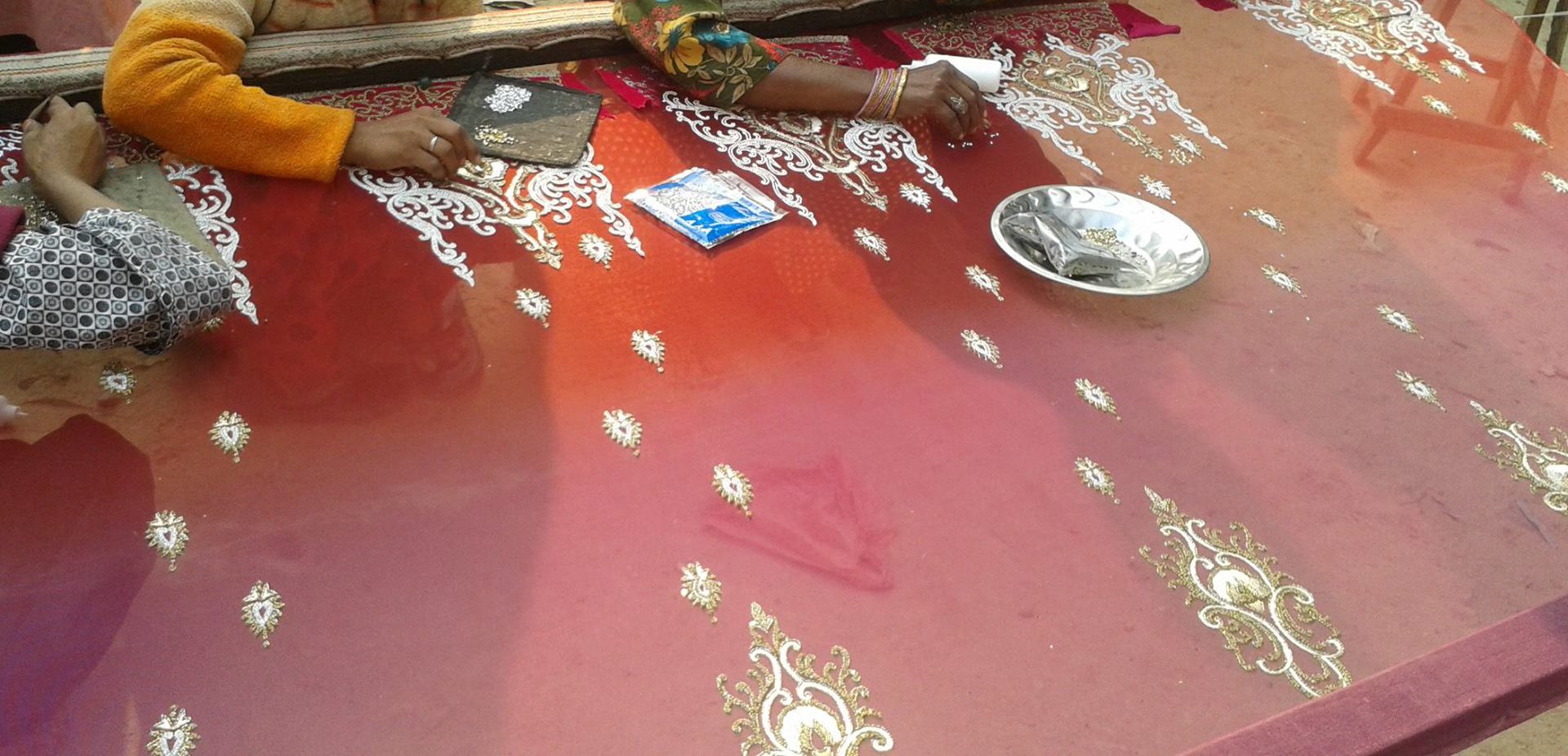Lucknow has been famous for Zardozi since the times of the Mughal rule. The legacy was taken forward by the Nawabs of Awadh. The craft has enjoyed the patronage of the royals since its origination and the Lucknow connect of Zardozi can probably be attributed to the fondness of the Lakhnawi people for things Nawabi.
Zardozi is not just a craft; it has a royal and classy appeal to it that completely transforms a textile into an exclusive piece of artistry. It can enhance the glamour quotient of any apparel and has the potential to make the person wearing it look more beautiful. A simple plain fabric can be turned into splendid attire with just a little bit of Zardozi work on it.
To know what Zardozi is all about or how you can make your dress more elegant, continue reading with our vivid description on Zardozi.
What all is done in Zardozi
The word Zardozi is made up of two Persian words “Zar” meaning “Gold” and “Dozi” meaning “Embroidery”. So, Zardozi is embroidery that is crafted with gold thread on different types of fabrics. Originally, Zardozi was done with pure silver wires having gold coating that came to be known as “Kalabatun”. Zardozi is primarily the dazzling, decorative and heavily embroidered craft that uses Salama (Gold wires), Dabka, sequins, Kasab, sitaaras (metal stars), beads, precious and semi-precious stones, metallic wires, badla wires and many such embellishing materials to adorn the fabric. With the surging prices of gold and silver, synthetic threads are now being commonly used for the embroidery. It is usually embroidered on silk, brocade, velvet, and satin. The process of Zardozi making involves three to four stages to that are required to complete this marvellous artistry. Let us go into the various stages step by step.
Designing and Tracing (Chapaai)
The process commences with the tracing of the designs or motifs on the fabric. For this, the designs are symmetrically drawn on a tracing paper with small holes made on the outlines of the motifs using a needle. The textile is then placed on a flat surface and the tracing sheet is put on it according to the position where the design is required to be printed. Now a cloth is immersed into a liquid solution made from indigo (neel) and kerosene and rubbed on the tracing sheet for letting the liquid penetrate and reach the cloth through the numerous small holes, thereby leaving the design on the fabric. The process is known as “Chapaai”.
Setting up of an “Addaa” (Wooden Framework)
The fabric is now stretched and fixed across a square wooden framework known as “Addaa”. The “Addaa” is used to stretch the cloth tightly with uniformity so that workers can sew Zardozi on it. An Addaa is made of wood and has four arms resting on wooden supports. It is usually made of Sheesham wood but sometimes bamboo is also used. The height of an Adda usually ranges between 1.5-2 feet above the ground. An Addaa can have 5-6 workers or Zardoz, as they are called, on both the sides of it to sew the design using thread and sequins, salmas, sitaras, and a variety of other embellishments.
Embroidery
For sewing, the workers use a needle or an ari which is a large needle with a hook on the end fixed to a wooden stick to make one of the most elaborate and heavy metallic work. Use of ari improves the speed of the Zardozi work but requires a lot of caution on the part of the artisan as even the slightest mistake can mar the entire effort. The simple thread and needle work is a little more time consuming with a lot of effort but is free from the risk which the use of ari carries. The number of days to complete a single piece of cloth depends on how intricate the design is and the number of craftsmen on work. However, it can take up to 10 days or a month for more elaborate Zardozi work. The charges depend on the kind of Zardozi to be done on the fabric, the design and the materials to be used for the same. The final work turns out to be a complete stunner that can do wonders to the looks of the wearer.
Finishing
To get the final look of finesse, the extra threads are finely and carefully cut. The fabric is then taken out of the wooden frame and sent for washing and ironing. The end result is an exquisite, exclusive and elaborate Zardozi work on thefabric that makes the textile look rich, classy and royal.
Zardozi is a craft that is synonymous with royalty, class, beauty and exquisiteness. To add grandeur to your saree, salwaar kameez or a lehanga, Zardozi is one of the best options. The art has now been taken to national and international ramps with famed fashion designers adding Zardozi detailing to their creations.
The craft has extended its canvas to now include Zardozi on bangles, shoes, cushions, draperies, table cloth, bags and clutches, cushion covers and probably everything you could ever think of. The art that was promoted during the Mughal reign still survives in the market owing to its magnificence, splendour, exclusiveness and class. So, adorn your beauty with the majestic Zardozi work on the apparel for the royal feel that Lucknow is known for.


Comment here